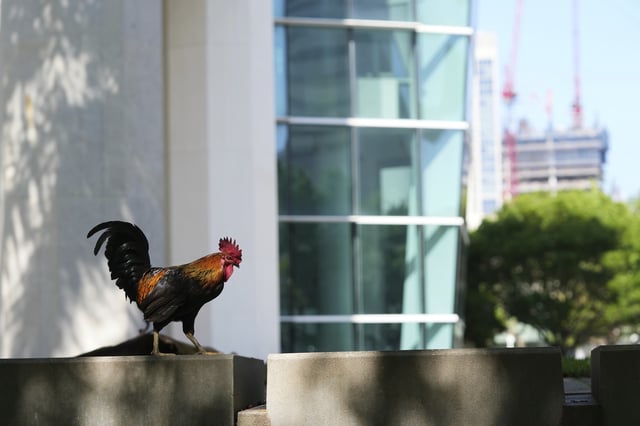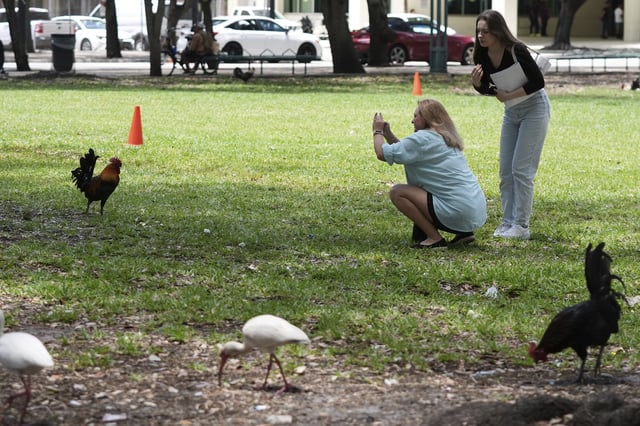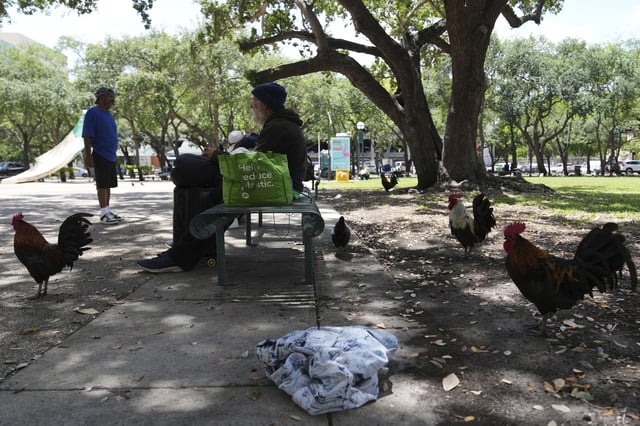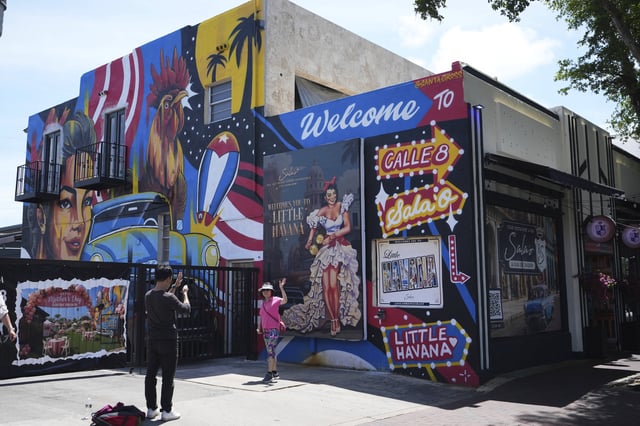Overview
- Feral chickens are a common sight in Miami, particularly in neighborhoods like Little Havana, where they are celebrated as cultural symbols.
- The rooster was adopted as a symbol of renewal and identity in Little Havana in 2002, with fiberglass statues becoming a tourist attraction along Calle Ocho.
- Residents and tourists largely welcome the chickens, but their legal status remains ambiguous under city and county ordinances regulating live poultry.
- Concerns are growing that gentrification and stricter animal control enforcement could jeopardize the chickens' presence in Miami's evolving neighborhoods.
- Invasive peacocks, known for their aggressive behavior, may pose additional competition to the feral chickens in some areas.



